United States
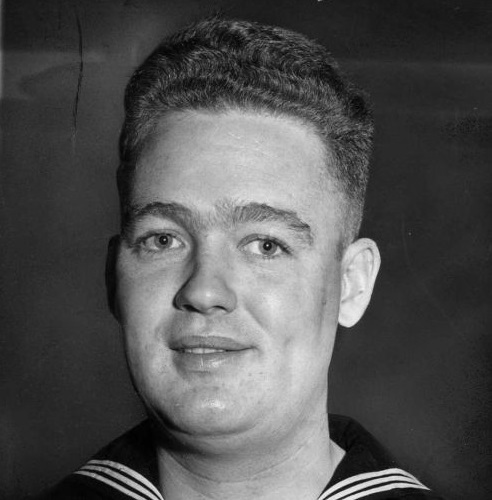

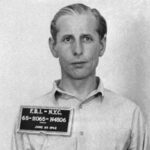 Adolf Hitler was always trying to find a way to infiltrate the nations of the world, because his ultimate goal was to control the world. Most of us would think that he was mostly active in the nations around Germany, and that might be a correct statement, but Hitler also had his sights on the United States. In 1942, Hitler ordered the defense branch of the German Military Intelligence Corps initiated a program to infiltrate the United States and destroy industrial plants, bridges, railroads, waterworks, and Jewish-owned department stores. His ultimate plan was to sabotage all of these, thereby shackling the United States so they would not be an effective enemy in World War II.
Adolf Hitler was always trying to find a way to infiltrate the nations of the world, because his ultimate goal was to control the world. Most of us would think that he was mostly active in the nations around Germany, and that might be a correct statement, but Hitler also had his sights on the United States. In 1942, Hitler ordered the defense branch of the German Military Intelligence Corps initiated a program to infiltrate the United States and destroy industrial plants, bridges, railroads, waterworks, and Jewish-owned department stores. His ultimate plan was to sabotage all of these, thereby shackling the United States so they would not be an effective enemy in World War II.
The Nazis hoped that their sabotage teams would be able to slip into America at the rate of one or two every six weeks…going unnoticed as simple illegal aliens. The first two teams, made up of eight Germans who had all lived in the United States before the war, departed the German submarine base at Lorient, France, in late May. On a heavily foggy June 12, 1942, just before midnight, a German submarine reached the American coast off Amagansett, Long Island. A team was deployed, rowing to the shore in an inflatable boat. Just as the Germans finished burying their explosives in the sand, John C Cullen, a young US Coast Guardsman, came upon them during his regular patrol of the beach. The leader of the team, George Dasch, bribed the suspicious Cullen, and he accepted the money, promising to keep quiet.
At first I found myself feeling angry at the “traitor” John C Cullen, who had sold out his country by accepting a bribe, but then I found out that Cullen was not only not a traitor, but he was a hero and a patriot in every way. As soon as Cullen passed safely back into the fog, he ran two miles back to the Coast Guard station and informed his superiors of his discovery. After retrieving the German supplies from the beach, the Coast Guard called the FBI, which launched a massive manhunt for the saboteurs, who had fled to New York City.
The saboteurs, Dasch and Ernest Burger, were unaware that the FBI was looking for them, but they decided to turn themselves in and betray their colleagues. It might have been because they were afraid they would be captured after the botched landing. On July 15, Dasch called the FBI in New York, but incredibly they failed to take his claims seriously. Dasch decided to travel to FBI headquarters in Washington DC. On July 18, the same day that a second four-man team successfully landed at Ponte Vedra Beach, Florida, Dasch turned himself in. He agreed to help the FBI capture the rest of the saboteurs.
With Dasch’s help, Burger and the rest of the Long Island team were picked up by July 22, 1942 and by July 27, 1942 the whole of the Florida team was arrested. To preserve wartime secrecy, President Franklin D Roosevelt ordered a special military tribunal consisting of seven generals to try the saboteurs. At the end of July, Dasch was sentenced to 30 years in prison, Burger was sentenced to hard labor for life, and the other six Germans were sentenced to die. The six condemned saboteurs were executed by electric chair in Washington 
 DC, on August 8, 1942. The situation was handled so quickly, that it is almost shocking to me. Two more German spies were caught after a landing in Maine in 1944. No other instances of German sabotage within wartime America has come to light. We assume that there were no others, but I don’t suppose we will ever know for sure. Nevertheless, no sabotages were ever carried out during that time.
DC, on August 8, 1942. The situation was handled so quickly, that it is almost shocking to me. Two more German spies were caught after a landing in Maine in 1944. No other instances of German sabotage within wartime America has come to light. We assume that there were no others, but I don’t suppose we will ever know for sure. Nevertheless, no sabotages were ever carried out during that time.
 When the British Colonies, also known as the Thirteen Colonies or the early United States, were founded in the 1600s, the colonies were left to govern themselves for the most part. The land was really an expansion of power for Britain. Nevertheless, there were wars that took place in the new land and with them the costs of war, and because the colonies were owned by the British government, the cost of war fell on them. The cost of victory in the 1754 to 1763 French and Indian War and the 1756 to 1763 Seven Years’ War left the British government deeply in debt. The wars were fought in the colonies, but were equipped and populated with the British forces stationed there, at the cost of millions of British funds. The British government decided to impose The Stamp Act and Townshend Acts to pay for the wars, which provoked colonial opposition and unrest, leading to the 1770 Boston Massacre and 1773 Boston Tea Party. Then, came the Intolerable Acts, meant to punish the Massachusetts colonists for their defiance in the Tea Party protest in reaction to changes in taxation by the British Government, in spring 1774 upon Massachusetts. It was enough. These acts took away self-governance and rights that Massachusetts had enjoyed since its founding, and triggered outrage and indignation in the Thirteen Colonies, and twelve colonies sent delegates to the First Continental Congress, from September 5, 1774 to October 26, 1774. Their goal was to draft a petition to the King and organize a boycott of British goods. It was these acts…the acts that took away self-governance and other rights that triggered outrage and indignation in the Thirteen Colonies. We have often heard it called “taxation without representation” and it would never be tolerated. This nation had tasted freedom, and would never go back. These acts were key developments in the outbreak of the American Revolutionary War in April 1775.
When the British Colonies, also known as the Thirteen Colonies or the early United States, were founded in the 1600s, the colonies were left to govern themselves for the most part. The land was really an expansion of power for Britain. Nevertheless, there were wars that took place in the new land and with them the costs of war, and because the colonies were owned by the British government, the cost of war fell on them. The cost of victory in the 1754 to 1763 French and Indian War and the 1756 to 1763 Seven Years’ War left the British government deeply in debt. The wars were fought in the colonies, but were equipped and populated with the British forces stationed there, at the cost of millions of British funds. The British government decided to impose The Stamp Act and Townshend Acts to pay for the wars, which provoked colonial opposition and unrest, leading to the 1770 Boston Massacre and 1773 Boston Tea Party. Then, came the Intolerable Acts, meant to punish the Massachusetts colonists for their defiance in the Tea Party protest in reaction to changes in taxation by the British Government, in spring 1774 upon Massachusetts. It was enough. These acts took away self-governance and rights that Massachusetts had enjoyed since its founding, and triggered outrage and indignation in the Thirteen Colonies, and twelve colonies sent delegates to the First Continental Congress, from September 5, 1774 to October 26, 1774. Their goal was to draft a petition to the King and organize a boycott of British goods. It was these acts…the acts that took away self-governance and other rights that triggered outrage and indignation in the Thirteen Colonies. We have often heard it called “taxation without representation” and it would never be tolerated. This nation had tasted freedom, and would never go back. These acts were key developments in the outbreak of the American Revolutionary War in April 1775.
The Revolutionary War was not going to be a short war. It would rage from April 19, 1775 to September 3, 1783…eight long years. For seven years after the United States Declaration of Independence was adopted by the Second Continental Congress at its meeting in Philadelphia, Pennsylvania, on July 4, 1776, the war still raged on. I don’t suppose any nation would want to simply lay down its control, but the reality is that Britain had lost its control many years before, and it was time to cut their losses and go home.
It was on June 11, 1776, that the Continental Congress made the decision and selected Thomas Jefferson of Virginia, John Adams of Massachusetts, Benjamin Franklin of Pennsylvania, Roger Sherman of Connecticut and Robert R. Livingston of New York to draft our Declaration of Independence. That moment truly sealed the fate of the Britain ownership of this nation. The words they penned would be taught in schools, put on documents, t-shirts, decals, and many other forms of media. Because John Adams knew of Thomas Jefferson’s prowess with a pen, he urged him to author the first draft of the document, which was then carefully revised by Adams and Franklin before being given to Congress for review on June 28. I don’t know how many have ever read the entire Declaration of Independence, but I have chosen to place it in its unedited entirety, because I think we need to know why our founding fathers fought so hard for our independence. The 4th of July is not about picnics and fireworks, it is about freedom, and we must never forget that…nor the five men who wrote it and the entire congress who signed it.
The Declaration of Independence
“When in the Course of human events, it becomes necessary for one people to dissolve the political bands which have connected them with another, and to assume among the powers of the earth, the separate and equal station to which the Laws of Nature and of Nature’s God entitle them, a decent respect to the opinions of mankind requires that they should declare the causes which impel them to the separation.
We hold these truths to be self-evident, that all men are created equal, that they are endowed by their Creator with certain unalienable Rights, that among these are Life, Liberty and the pursuit of Happiness.–That to secure these rights, Governments are instituted among Men, deriving their just powers from the consent of the governed, –That whenever any Form of Government becomes destructive of these ends, it is the Right of the People to alter or to abolish it, and to institute new Government, laying its foundation on such principles and organizing its powers in such form, as to them shall seem most likely to effect their Safety and Happiness. Prudence, indeed, will dictate that Governments long established should not be changed for light and transient causes; and accordingly all experience hath shewn, that mankind are more disposed to suffer, while evils are sufferable, than to right themselves by abolishing the forms to which they are accustomed. But when a long train of abuses and usurpations, pursuing invariably the same Object evinces a design to reduce them under absolute Despotism, it is their right, it is their duty, to throw off such Government, and to provide new Guards for their future security.–Such has been the patient sufferance of these Colonies; and such is now the necessity which constrains them to alter their former Systems of Government. The history of the present King of Great Britain is a history of repeated injuries and usurpations, all having in direct object the establishment of an absolute Tyranny over these States. To prove this, let Facts be submitted to a candid world.
He has refused his Assent to Laws, the most wholesome and necessary for the public good.
He has forbidden his Governors to pass Laws of immediate and pressing importance, unless suspended in their operation till his Assent should be obtained; and when so suspended, he has utterly neglected to attend to them.
He has refused to pass other Laws for the accommodation of large districts of people, unless those people would relinquish the right of Representation in the Legislature, a right inestimable to them and formidable to tyrants only.
He has called together legislative bodies at places unusual, uncomfortable, and distant from the depository of their public Records, for the sole purpose of fatiguing them into compliance with his measures.
He has dissolved Representative Houses repeatedly, for opposing with manly firmness his invasions on the rights of the people.
He has refused for a long time, after such dissolutions, to cause others to be elected; whereby the Legislative powers, incapable of Annihilation, have returned to the People at large for their exercise; the State remaining in the mean time exposed to all the dangers of invasion from without, and convulsions within.

He has endeavoured to prevent the population of these States; for that purpose obstructing the Laws for Naturalization of Foreigners; refusing to pass others to encourage their migrations hither, and raising the conditions of new Appropriations of Lands.
He has obstructed the Administration of Justice, by refusing his Assent to Laws for establishing Judiciary powers.
He has made Judges dependent on his Will alone, for the tenure of their offices, and the amount and payment of their salaries.
He has erected a multitude of New Offices, and sent hither swarms of Officers to harrass our people, and eat out their substance.
He has kept among us, in times of peace, Standing Armies without the Consent of our legislatures.
He has affected to render the Military independent of and superior to the Civil power.
He has combined with others to subject us to a jurisdiction foreign to our constitution, and unacknowledged by our laws; giving his Assent to their Acts of pretended Legislation:
For Quartering large bodies of armed troops among us:
For protecting them, by a mock Trial, from punishment for any Murders which they should commit on the Inhabitants of these States:
For cutting off our Trade with all parts of the world:
For imposing Taxes on us without our Consent:
For depriving us in many cases, of the benefits of Trial by Jury:
For transporting us beyond Seas to be tried for pretended offences
For abolishing the free System of English Laws in a neighbouring Province, establishing therein an Arbitrary government, and enlarging its Boundaries so as to render it at once an example and fit instrument for introducing the same absolute rule into these Colonies:
For taking away our Charters, abolishing our most valuable Laws, and altering fundamentally the Forms of our Governments:
For suspending our own Legislatures, and declaring themselves invested with power to legislate for us in all cases whatsoever.
He has abdicated Government here, by declaring us out of his Protection and waging War against us.
He has plundered our seas, ravaged our Coasts, burnt our towns, and destroyed the lives of our people.
He is at this time transporting large Armies of foreign Mercenaries to compleat the works of death, desolation and tyranny, already begun with circumstances of Cruelty & perfidy scarcely paralleled in the most barbarous ages, and totally unworthy the Head of a civilized nation.
He has constrained our fellow Citizens taken Captive on the high Seas to bear Arms against their Country, to become the executioners of their friends and Brethren, or to fall themselves by their Hands.
He has excited domestic insurrections amongst us, and has endeavoured to bring on the inhabitants of our frontiers, the merciless Indian Savages, whose known rule of warfare, is an undistinguished destruction of all ages, sexes and conditions.
In every stage of these Oppressions We have Petitioned for Redress in the most humble terms: Our repeated Petitions have been answered only by repeated injury. A Prince whose character is thus marked by every act which may define a Tyrant, is unfit to be the ruler of a free people.
Nor have We been wanting in attentions to our Brittish brethren. We have warned them from time to time of attempts by their legislature to extend an unwarrantable jurisdiction over us. We have reminded them of the circumstances of our emigration and settlement here. We have appealed to their native justice and magnanimity, and we have conjured them by the ties of our common kindred to disavow these usurpations, which, would inevitably interrupt our connections and correspondence. They too have been deaf to the voice of justice and of consanguinity. We must, therefore, acquiesce in the necessity, which denounces our Separation, and hold them, as we hold the rest of mankind, Enemies in War, in Peace Friends.
We, therefore, the Representatives of the united States of America, in General Congress, Assembled, appealing to the Supreme Judge of the world for the rectitude of our intentions, do, in the Name, and by Authority of the good People of these Colonies, solemnly publish and declare, That these United Colonies are, and of Right  ought to be Free and Independent States; that they are Absolved from all Allegiance to the British Crown, and that all political connection between them and the State of Great Britain, is and ought to be totally dissolved; and that as Free and Independent States, they have full Power to levy War, conclude Peace, contract Alliances, establish Commerce, and to do all other Acts and Things which Independent States may of right do. And for the support of this Declaration, with a firm reliance on the protection of divine Providence, we mutually pledge to each other our Lives, our Fortunes and our sacred Honor.”
ought to be Free and Independent States; that they are Absolved from all Allegiance to the British Crown, and that all political connection between them and the State of Great Britain, is and ought to be totally dissolved; and that as Free and Independent States, they have full Power to levy War, conclude Peace, contract Alliances, establish Commerce, and to do all other Acts and Things which Independent States may of right do. And for the support of this Declaration, with a firm reliance on the protection of divine Providence, we mutually pledge to each other our Lives, our Fortunes and our sacred Honor.”
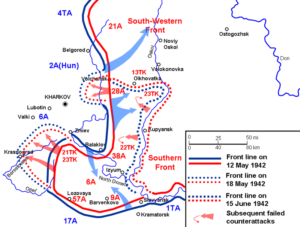 Through the years, Russia, also known as the Soviet Union and the USSR, has been sometimes ally and sometimes enemy of the United States. World War I and World War II found the Soviet Union once again on the side of good as a part of the Allied Forces. The main countries in the Allied powers of World War I were France, the British Empire and the Russian Empire. The main Allied powers of World War II were France, Great Britain, the United States, China, and the Soviet Union. So in these two wars anyway, the United States and Russia were on the same side. The three principal partners in the Axis alliance in World War II were Germany, Italy, and Japan. They were joined by Bulgaria, Hungary, Romania and Thailand, who also signed the Tri-Partite Pact as member states.
Through the years, Russia, also known as the Soviet Union and the USSR, has been sometimes ally and sometimes enemy of the United States. World War I and World War II found the Soviet Union once again on the side of good as a part of the Allied Forces. The main countries in the Allied powers of World War I were France, the British Empire and the Russian Empire. The main Allied powers of World War II were France, Great Britain, the United States, China, and the Soviet Union. So in these two wars anyway, the United States and Russia were on the same side. The three principal partners in the Axis alliance in World War II were Germany, Italy, and Japan. They were joined by Bulgaria, Hungary, Romania and Thailand, who also signed the Tri-Partite Pact as member states.
On May 12, 1942, Soviet forces under the command of Marshal Semyon Timoshenko attacked the German 6th  Army from a vulnerable point established during the winter counter-offensive. After a promising start, the offensive was stopped on May 15th by massive airstrikes. There were a number of critical Soviet errors by several staff officers and by Joseph Stalin, who failed to accurately estimate the 6th Army’s potential and overestimated their own newly raised forces, facilitated a German pincer attack on May 17th which cut off three Soviet field armies from the rest of the front by May 22nd. The Soviet Army was hemmed into a narrow area, and the 250,000-strong Soviet force inside the pocket was exterminated from all sides by German armored, artillery, and machine gun firepower, as well as 7,700 tons of air-dropped bombs. After six days of encirclement by the German Army, the Soviet resistance ended as their troops were killed or taken prisoner. It was a devastating loss for the Soviets.
Army from a vulnerable point established during the winter counter-offensive. After a promising start, the offensive was stopped on May 15th by massive airstrikes. There were a number of critical Soviet errors by several staff officers and by Joseph Stalin, who failed to accurately estimate the 6th Army’s potential and overestimated their own newly raised forces, facilitated a German pincer attack on May 17th which cut off three Soviet field armies from the rest of the front by May 22nd. The Soviet Army was hemmed into a narrow area, and the 250,000-strong Soviet force inside the pocket was exterminated from all sides by German armored, artillery, and machine gun firepower, as well as 7,700 tons of air-dropped bombs. After six days of encirclement by the German Army, the Soviet resistance ended as their troops were killed or taken prisoner. It was a devastating loss for the Soviets.
The Counter-offensive of the Second Battle of Kharkov, was called Operation Fredericus, and was launched by the Axis forces in the region around Kharkov against the Red Army Izium bridgehead offensive, and was conducted from May 12 to May 28, 1942, on the Eastern Front during World War II. The objective was to  eliminate the Izium bridgehead over Seversky Donets, also known as the “Barvenkovo bulge,” which was one of the Soviet offensive’s staging areas. A winter counter-offensive drove German troops away from Moscow, but depleted the Red Army’s reserves. The Kharkov offensive was next Soviet attempt to expand their strategic initiative, although it failed to secure a significant element of surprise. The battle ended up being an overwhelming German victory, with 280,000 Soviet casualties compared to just 20,000 for the Germans and their allies. The German Army Group South pressed its advantage, encircling the Soviet 28th Army on June 13 in Operation Wilhelm and pushing back the 38th and 9th Armies on June 22.
eliminate the Izium bridgehead over Seversky Donets, also known as the “Barvenkovo bulge,” which was one of the Soviet offensive’s staging areas. A winter counter-offensive drove German troops away from Moscow, but depleted the Red Army’s reserves. The Kharkov offensive was next Soviet attempt to expand their strategic initiative, although it failed to secure a significant element of surprise. The battle ended up being an overwhelming German victory, with 280,000 Soviet casualties compared to just 20,000 for the Germans and their allies. The German Army Group South pressed its advantage, encircling the Soviet 28th Army on June 13 in Operation Wilhelm and pushing back the 38th and 9th Armies on June 22.
 As planes became more and more common, it became evident that at some point, they were going to be used commercially. Still, I can’t imagine being on that first commercial flight. I doubt if it comes as a surprised that the first commercial flight in history occurred in the United States. What is surprising is that the flight took place on January 1, 1914, three years before the United States entered World War I. Planes weren’t commonly used forms of transportation in any arena, so a commercial flight is almost beyond imagination. Following that first flight, the Vickers Viscount emerged in 1948, as the first commercial airliner to use turboprop power. That plane was equipped with four Rolls-Royce Dart turboprop engines, the British aircraft had a pressurized cabin and was capable of carrying 40 to 65 passengers.
As planes became more and more common, it became evident that at some point, they were going to be used commercially. Still, I can’t imagine being on that first commercial flight. I doubt if it comes as a surprised that the first commercial flight in history occurred in the United States. What is surprising is that the flight took place on January 1, 1914, three years before the United States entered World War I. Planes weren’t commonly used forms of transportation in any arena, so a commercial flight is almost beyond imagination. Following that first flight, the Vickers Viscount emerged in 1948, as the first commercial airliner to use turboprop power. That plane was equipped with four Rolls-Royce Dart turboprop engines, the British aircraft had a pressurized cabin and was capable of carrying 40 to 65 passengers.
While I would have expected the world’s first commercial jet airliner to follow suit and come from the United States, it did not. The de Havilland DH.106 Comet, the world’s first commercial jet airliner, was actually developed and manufactured by de Havilland at its Hatfield Aerodrome in Hertfordshire, United Kingdom. The Comet 1 prototype first flew in 1949. It featured an aerodynamically clean design with four de Havilland Ghost turbojet engines buried in the wing roots, a pressurized cabin, and large square windows. It’s relatively quiet, comfortable passenger cabin and innovative design, made the plane commercially promising at its debut on this  day, May 2, 1952. Unfortunately, within a year of entering service, the plane began to experience problems. Three Comets were lost within twelve months in highly publicized accidents, after suffering catastrophic in-flight break-ups. Two of the break-ups proved to be caused by structural failure resulting from metal fatigue in the airframe, a phenomenon not fully understood at the time. The third break-up was due to overstressing of the airframe during flight through severe weather. That flight might have had problems even if it had been a more advanced plane, because weather related crashes are still somewhat common today.
day, May 2, 1952. Unfortunately, within a year of entering service, the plane began to experience problems. Three Comets were lost within twelve months in highly publicized accidents, after suffering catastrophic in-flight break-ups. Two of the break-ups proved to be caused by structural failure resulting from metal fatigue in the airframe, a phenomenon not fully understood at the time. The third break-up was due to overstressing of the airframe during flight through severe weather. That flight might have had problems even if it had been a more advanced plane, because weather related crashes are still somewhat common today.
Due the the problems, the Comet was withdrawn from service and extensively tested. Design and construction flaws, including improper riveting and dangerous concentrations of stress around some of the square windows, were ultimately identified as the points of the fatigue. As a result, the Comet was extensively redesigned, with oval windows, structural reinforcements and other changes. Rival manufacturers meanwhile heeded the lessons learned from the Comet while developing their own aircraft. I guess there always has to be that one we learned from. Unfortunately, when people get scared about something, it is very hard to recover in the courts of public opinion.
 Sadly, sales of the Comet 1 never fully recovered after the crashes. The improved Comet 2 and the prototype Comet 3 culminated in the redesigned Comet 4 series which debuted in 1958 and did quite well, remaining in commercial service until 1981. Later, the Comet was adapted for military usage. It played a variety of military roles such as VIP, medical and passenger transport, as well as surveillance. In 1997, the last Comet 4 was used as a research platform, making its final flight later that year. The most extensive modification resulted in a specialized maritime patrol derivative, the Hawker Siddeley Nimrod, which remained in service with the Royal Air Force until 2011, over 60 years after the Comet’s first flight.
Sadly, sales of the Comet 1 never fully recovered after the crashes. The improved Comet 2 and the prototype Comet 3 culminated in the redesigned Comet 4 series which debuted in 1958 and did quite well, remaining in commercial service until 1981. Later, the Comet was adapted for military usage. It played a variety of military roles such as VIP, medical and passenger transport, as well as surveillance. In 1997, the last Comet 4 was used as a research platform, making its final flight later that year. The most extensive modification resulted in a specialized maritime patrol derivative, the Hawker Siddeley Nimrod, which remained in service with the Royal Air Force until 2011, over 60 years after the Comet’s first flight.
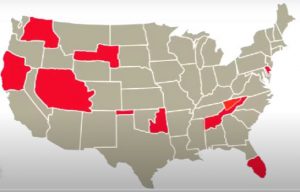
 When we think of how the 50 states of the United States were formed, we somehow think of an orderly process that followed a specific protocol, but in many ways, that was not the case. There are actually a number of states that were planned, or even in place for a time, but failed to continue to be or failed to form into states that exist today. These states were often formed out of conflict, when people didn’t like what they saw around them, and they decided to take matters into their own hand. Had they continued to exist, it would have felt normal, but in light of today’s United States, they would have been really strange. Even the names of these proposed states were rather strange.
When we think of how the 50 states of the United States were formed, we somehow think of an orderly process that followed a specific protocol, but in many ways, that was not the case. There are actually a number of states that were planned, or even in place for a time, but failed to continue to be or failed to form into states that exist today. These states were often formed out of conflict, when people didn’t like what they saw around them, and they decided to take matters into their own hand. Had they continued to exist, it would have felt normal, but in light of today’s United States, they would have been really strange. Even the names of these proposed states were rather strange.
Things like Westsylvania, Transylvania, Muskogee, and Deseret; make me wonder how they came up with this stuff. Of course many of us have heard of Transylvania, but it had nothing to do wit Dracula or any other vampire. Sorry if that disappoints some people. Transylvania’s name, meaning “across the woods” in Latin, stems from the university’s founding in the heavily forested region of western Virginia known as the 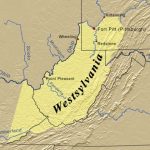
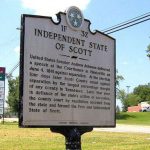 Transylvania Colony, which became most of Kentucky in 1792. The state was founded in 1775, and statehood removed in 1776, when Virginia when the Virginia General Assembly invalidated the Transylvania Purchase.
Transylvania Colony, which became most of Kentucky in 1792. The state was founded in 1775, and statehood removed in 1776, when Virginia when the Virginia General Assembly invalidated the Transylvania Purchase.
The proposed state of Westsylvania was located in what is now West Virginia, southwestern Pennsylvania, and small parts of Kentucky, Maryland, and Virginia. Westsylvania was proposed early in the American Revolution It would have been the fourteenth state in the newly formed United States, had it been recognized. In the final years of the Revolutionary War…in 1782, Hugh Henry Brackenridge, a Pittsburgh lawyer and strong supporter of the national government, convinced the Pennsylvania Assembly to declare that agitation for a separate state was treason, rendering the promotion of Westsylvania subject to the death penalty. Pennsylvania also sent secret agents, such as the Reverend James Finley, to work against the Westsylvania movement. According to historian Jack Sosin, “Finely’s efforts, the threat that the settlers’ land might be sold, and the cool reaction to the proposed new state by Congress finally quieted the Westerners.”

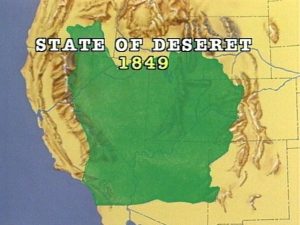 In all, there were about 12 proposed states that if ratified, would have changed the United States as we know it. I can’t imagine having 62 states, or living in a state called Absaroka, Delmarva, Scott, Nickajack, or Sequoyah. And while I was born in Superior, Wisconsin, I can’t imagine living in the state of Superior. And of course, Transylvania, Westsylvania, Lincoln, Muskogee, Deseret, or Franklin would be equally odd. While these “states” did exist for a time, I rather like our country just the way it is. Fifty states is a nice round number.
In all, there were about 12 proposed states that if ratified, would have changed the United States as we know it. I can’t imagine having 62 states, or living in a state called Absaroka, Delmarva, Scott, Nickajack, or Sequoyah. And while I was born in Superior, Wisconsin, I can’t imagine living in the state of Superior. And of course, Transylvania, Westsylvania, Lincoln, Muskogee, Deseret, or Franklin would be equally odd. While these “states” did exist for a time, I rather like our country just the way it is. Fifty states is a nice round number.
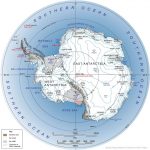
 A military-free zone…is there such a place? Most of us don’t think so, but there is, actually. In reality, I can’t imagine fighting a war in Antarctica, but the area has actually been involved in a few disputes. Since the 1800s a number of nations, including Great Britain, Australia, Chile and Norway, have laid claim to parts of Antarctica. I think mostly the purpose for most nations is scientific research, but people have also taken trips across the frozen landscape as a way to challenge themselves. Of course, they didn’t do that in the 1800s.
A military-free zone…is there such a place? Most of us don’t think so, but there is, actually. In reality, I can’t imagine fighting a war in Antarctica, but the area has actually been involved in a few disputes. Since the 1800s a number of nations, including Great Britain, Australia, Chile and Norway, have laid claim to parts of Antarctica. I think mostly the purpose for most nations is scientific research, but people have also taken trips across the frozen landscape as a way to challenge themselves. Of course, they didn’t do that in the 1800s.
Over the years, the competing claims led to diplomatic disputes and even armed clashes. In 1948, Argentine military forces fired on British troops in an area claimed by both nations. Different nations, over the years have disputed lands and fought wars over ownership, and I guess that Antarctica was no different…even if I can’t imagine fighting over a frozen piece of land that, while it is 5,400,000 square miles of land, it is largely covered with ice and snow year round. Still, it seems to me that a continent that is that big would have plenty of room for everyone, but that did not settle the disputes.
Due to the increased number and type of incidents, together with evidence that the Soviet Union was becoming more interested in Antarctica, the United States decided to propose that the continent be made a trustee of the United Nations. This idea was rejected when none of the other nations with interests on the continent would agree to cede their claims of sovereignty to an international organization. That idea didn’t really go over too well either. By the 1950s, some officials in the United States began to press for a more active United States role in Antarctica, believing that the continent might have military potential as an area for nuclear tests. It looked like something was going to have to be done. President Dwight D Eisenhower took a different approach. US diplomats, working with their Soviet counterparts, worked out a treaty that set aside Antarctica as a military-free zone and postponed settling territorial claims for future debate. There could be “no military presence on the continent, and no testing of weapons of any sort, including nuclear weapons. Scientific ventures were allowed, and scientists would not be prohibited from traveling through any of the areas claimed by various nations.” Since the treaty did not directly tamper with issues of territorial sovereignty in Antarctica, the involved 
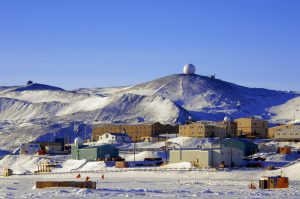 parties included all nations with territorial claims on the continent. As such, the treaty marked a small but significant first step toward US-Soviet arms control and political cooperation. On December 1, 1959, twelve nations, including the United States and the Soviet Union, sign the Antarctica Treaty, which bans military activity and weapons testing on that continent. It was the first arms control agreement signed in the Cold War period. The treaty went into effect in June 1961, and its policies continue to govern Antarctica to this day.
parties included all nations with territorial claims on the continent. As such, the treaty marked a small but significant first step toward US-Soviet arms control and political cooperation. On December 1, 1959, twelve nations, including the United States and the Soviet Union, sign the Antarctica Treaty, which bans military activity and weapons testing on that continent. It was the first arms control agreement signed in the Cold War period. The treaty went into effect in June 1961, and its policies continue to govern Antarctica to this day.
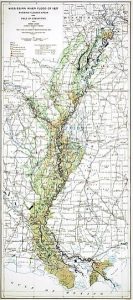 The Mississippi River is a is the widest river in the United States. It’s mere size and the amount of water in it, makes one expect that at some point, it is going to flood. In fact, it has flooded many times over the years, but none was anything like the Great Mississippi Flood of 1927. It was the most destructive river flood in the history of the United States. In all, 27,000 square miles of land were inundated with water up to a 30 feet depth. In all, 630,000 people were affected by the flood. About 94% of them lived in the states of Arkansas, Mississippi, and Louisiana, most in the Mississippi Delta. At least 15 inches of rain fell in 18 hours causing the Mississippi River to brake out of its levee system at 145 locations. Ten states were affected…Arkansas, Illinois, Kentucky, Louisiana, Mississippi, Missouri, Tennessee, Texas, Oklahoma, and Kansas. Arkansas was the worst affected with 14% of the state flooded.
The Mississippi River is a is the widest river in the United States. It’s mere size and the amount of water in it, makes one expect that at some point, it is going to flood. In fact, it has flooded many times over the years, but none was anything like the Great Mississippi Flood of 1927. It was the most destructive river flood in the history of the United States. In all, 27,000 square miles of land were inundated with water up to a 30 feet depth. In all, 630,000 people were affected by the flood. About 94% of them lived in the states of Arkansas, Mississippi, and Louisiana, most in the Mississippi Delta. At least 15 inches of rain fell in 18 hours causing the Mississippi River to brake out of its levee system at 145 locations. Ten states were affected…Arkansas, Illinois, Kentucky, Louisiana, Mississippi, Missouri, Tennessee, Texas, Oklahoma, and Kansas. Arkansas was the worst affected with 14% of the state flooded.
It was Good Friday, April 15, 1927, the disaster began when 15 inches of rain fell in New Orleans in 18 hours. More than 4 feet of water covered parts of the city. A group of influential bankers in town met to discuss how to guarantee the safety of the city, as they had already learned of the massive scale of flooding upriver. A few weeks after, they arranged to set off about 30 tons of dynamite on the levee at Caernarvon, in an effort to flood a less populated area and save the cities that would have been severely damaged. I’m not sure how much this effort helped, and in the end, about 500 people lost their lives anyway. It wouldn’t be the last Mississippi River flood, but it would be the worst.
As a result of the flooding, many of the misplaced people joined the Great Migration from the south to northern and midwestern industrial cities rather than return to rural agricultural labor. I would think that the idea of such a massive amount of cleanup would be more than many people could take. This massive population movement increased from World War II until 1970. Of course, this volume of population movement would not be good for the states who were losing people. To try to prevent future floods, the federal government built the world’s 
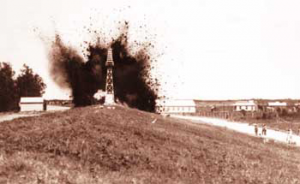 longest system of levees and floodways. By August 1927, when the flood subsided, hundreds of thousands of people had been made homeless and displaced; properties, livestock and crops were destroyed. Flooding on the Mississippi is not an unusual event, and no matter how many precautions we take, there will still be losses when the river overflows its banks.
longest system of levees and floodways. By August 1927, when the flood subsided, hundreds of thousands of people had been made homeless and displaced; properties, livestock and crops were destroyed. Flooding on the Mississippi is not an unusual event, and no matter how many precautions we take, there will still be losses when the river overflows its banks.
 In a time of global pandemic, many people are thinking about the Coronavirus, and the impact it is having on all our lives. Of course, there have been a number of pandemics in years past, such as the Spanish Flu Pandemic of 1918, that killed 50,000,000 worldwide. The pandemic was active from January 1918 to December 1920. So little was known then about how to protect ourselves from these things, or even what a virus was. We learned from that pandemic and others as the years went on.
In a time of global pandemic, many people are thinking about the Coronavirus, and the impact it is having on all our lives. Of course, there have been a number of pandemics in years past, such as the Spanish Flu Pandemic of 1918, that killed 50,000,000 worldwide. The pandemic was active from January 1918 to December 1920. So little was known then about how to protect ourselves from these things, or even what a virus was. We learned from that pandemic and others as the years went on.
One such epidemic was the Polio Epidemic in the United States, the 1952 epidemic was the worst outbreak in the nation’s history. It is credited with heightening parents’ fears of the disease and focusing public awareness on the need for a vaccine. Of the 57,628 cases reported that year 3,145 died and 21,269 were left with mild to disabling paralysis. Finally, on March 26, 1953, American medical researcher Dr Jonas Salk announced on a national radio show that he has successfully tested a vaccine against poliomyelitis, which is the virus that causes the crippling disease of polio. Dr Salk was celebrated as the great doctor-benefactor of his time, for promising eventually to eradicate the disease, which is known as “infant paralysis” because it mainly affects children.
Polio attacks the nervous system and can cause varying degrees of paralysis. The disease affected humanity throughout recorded history, and since the virus is easily transmitted, epidemics were commonplace in the first decades of the 20th century. The summer of 1894 brought the United States first major polio epidemic, beginning in Vermont. By the 20th century thousands were affected every year. In the first decades of the 20th century, treatments were limited to quarantines and the infamous “iron lung,” a metal coffin-like contraption that aided respiration. Although children, and especially infants, were among the worst affected, adults were  also commonly afflicted, including future president Franklin D Roosevelt, who in 1921 was stricken with polio at the age of 39 and was left partially paralyzed. Roosevelt later transformed his estate in Warm Springs, Georgia, into a recovery retreat for polio victims and was instrumental in raising funds for polio-related research and the treatment of polio patients.
also commonly afflicted, including future president Franklin D Roosevelt, who in 1921 was stricken with polio at the age of 39 and was left partially paralyzed. Roosevelt later transformed his estate in Warm Springs, Georgia, into a recovery retreat for polio victims and was instrumental in raising funds for polio-related research and the treatment of polio patients.
Salk’s procedure, first attempted unsuccessfully by American Maurice Brodie in the 1930s, was to kill several strains of the virus and then inject the benign viruses into a healthy person’s bloodstream. The person’s immune system would then create antibodies designed to resist future exposure to poliomyelitis. Salk conducted the first human trials on former polio patients, on himself, and his family. By 1953, he was ready to announce his findings. The announcement was made on March 25th, on the CBS national radio network, and two days later in an article published in the Journal of the American Medical Association. Dr Salk became an immediate celebrity.
Clinical trials using the Salk vaccine and a placebo began in 1954 on nearly two million American schoolchildren. It was announced that the vaccine was effective and safe in April 1955, and a nationwide inoculation campaign began. Unfortunately a defective vaccine manufactured at Cutter Laboratories of Berkeley, California, had tragic results in the Western and mid-Western United States, when more than 200,000 people were injected with a defective vaccine, and thousands of polio cases were reported, 200 children were left paralyzed and 10 died.
The ensuing panic delayed production of the vaccine. Still, new polio cases dropped to under 6,000 in 1957, the  first year after the vaccine was widely available. So, other than the defective vaccine, maybe it was working. Scientists continued to improve the product, and in 1962, an oral vaccine developed by Polish-American researcher Albert Sabin became available, greatly facilitating distribution of the polio vaccine. These days, polio has been all but wiped out, and there are just a handful of polio cases in the United States every year. Most of these are “imported” by Americans from developing nations where polio is still a problem. Jonas Salk was awarded the Presidential Medal of Freedom in 1977, among other honors. He died in La Jolla, California, in 1995.
first year after the vaccine was widely available. So, other than the defective vaccine, maybe it was working. Scientists continued to improve the product, and in 1962, an oral vaccine developed by Polish-American researcher Albert Sabin became available, greatly facilitating distribution of the polio vaccine. These days, polio has been all but wiped out, and there are just a handful of polio cases in the United States every year. Most of these are “imported” by Americans from developing nations where polio is still a problem. Jonas Salk was awarded the Presidential Medal of Freedom in 1977, among other honors. He died in La Jolla, California, in 1995.
 After the Japanese attacked Pearl Harbor, the people of the United States were justifiably nervous about the Japanese American citizens. Many of these people had family in Japan, and their loyalty was in question. No one felt safe, so on February 19, 1942, just 10 weeks later, President Franklin D Roosevelt signed Executive Order 9066, authorizing the removal of any or all people from military areas “as deemed necessary or desirable.”
After the Japanese attacked Pearl Harbor, the people of the United States were justifiably nervous about the Japanese American citizens. Many of these people had family in Japan, and their loyalty was in question. No one felt safe, so on February 19, 1942, just 10 weeks later, President Franklin D Roosevelt signed Executive Order 9066, authorizing the removal of any or all people from military areas “as deemed necessary or desirable.”
The feeling of panic that had been simmering since the attack wasn’t going away when it came to the Japanese, or the Japanese Americans, so the military defined the entire West Coast, home to the majority of Americans of Japanese ancestry or citizenship, as a military area. What began as a plan to protect the military areas, quickly escalated, and by June, more than 110,000 Japanese Americans were relocated to remote internment camps built by the United States military in scattered locations around the 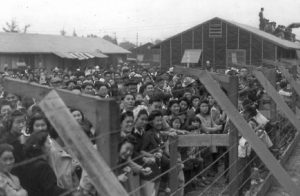 country, where they would remain for the next two and a half years. Many of these Japanese Americans endured extremely difficult living conditions and poor treatment by their military guards. It wasn’t what we would expect of our own military, but it was a tense time. It almost seemed like “guilt by association” or in this case, by race. They were Japanese, and that made people wary of them…and no one was in the mood to listen to their side.
country, where they would remain for the next two and a half years. Many of these Japanese Americans endured extremely difficult living conditions and poor treatment by their military guards. It wasn’t what we would expect of our own military, but it was a tense time. It almost seemed like “guilt by association” or in this case, by race. They were Japanese, and that made people wary of them…and no one was in the mood to listen to their side.
The internment of these loyal Japanese Americans was, at the very least, unfair, and at worst, just short of criminal. It was only short of criminal because it was approved by the President of the United States. Finally, after two and a half years, United States Major General Henry C Pratt issued Public Proclamation No. 21, declaring that, effective January 2, 1945, Japanese American “evacuees” from the West Coast could return to their homes. The nightmare was over. Of 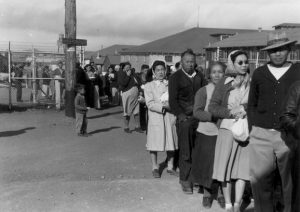 course, being over doesn’t mean that everything went immediately back to the way it was before. These people had to find new jobs and homes, because their jobs, and possibly their homes, were no longer there for them to return to.
course, being over doesn’t mean that everything went immediately back to the way it was before. These people had to find new jobs and homes, because their jobs, and possibly their homes, were no longer there for them to return to.
During the course of World War II, ten Americans were convicted of spying for Japan, but not one of them was of Japanese ancestry, which is disgusting…not that no Japanese Americans were part of that, but that any American would betray their country in this way. In 1988, President Ronald Reagan signed a bill to recompense each surviving internee with a tax-free check for $20,000 and an apology from the United States government.
 It was a big move for a Milwaukee, Wisconsin girl, but in the end, it would be her undoing. Mildred Fish was born in Milwaukee in 1902, and upon her high school graduation, she studied and then taught English at UW-Madison. It was there that she met Arvid Harnack, a Rockefeller Fellow from Germany. They soon fell in love, and were married in 1926. Because she was a progressive woman and proud of her name, Mildred chose to hyphenate her name, and became known as Mildred Fish-Harnack.
It was a big move for a Milwaukee, Wisconsin girl, but in the end, it would be her undoing. Mildred Fish was born in Milwaukee in 1902, and upon her high school graduation, she studied and then taught English at UW-Madison. It was there that she met Arvid Harnack, a Rockefeller Fellow from Germany. They soon fell in love, and were married in 1926. Because she was a progressive woman and proud of her name, Mildred chose to hyphenate her name, and became known as Mildred Fish-Harnack.
A few years later, she and Arvid both moved to Germany, where she taught and also worked on her doctorate while he worked for the German government. It was during those years that Fish-Harnack became interested in the Soviet Union, where women could choose where to work and also had other rights that women in the United States did not have…a situation which would very soon sound absurd. Nevertheless, at that time, it was so. Throughout the 1930s, Mildred and Arvid, who became increasingly  alarmed by Hitler’s rise to power, began to communicate with a close circle of associates who believed communism and the Soviet Union might be the only possible stumbling block to complete Nazi tyranny in Europe. As the Hitler and the Nazi regime began to come into power, Fish-Harnack and her husband joined a small resistance group, which the Nazi secret police…the Gestapo…would later call the Red Orchestra. This resistance group smuggled important secrets about the Nazis to the United States and Soviet governments and helped Jews escape from Germany. When war was declared in 1941, she did not leave with other American expatriates.
alarmed by Hitler’s rise to power, began to communicate with a close circle of associates who believed communism and the Soviet Union might be the only possible stumbling block to complete Nazi tyranny in Europe. As the Hitler and the Nazi regime began to come into power, Fish-Harnack and her husband joined a small resistance group, which the Nazi secret police…the Gestapo…would later call the Red Orchestra. This resistance group smuggled important secrets about the Nazis to the United States and Soviet governments and helped Jews escape from Germany. When war was declared in 1941, she did not leave with other American expatriates.
Of course, their activities were espionage and would eventually cost them their lives. For his part, her husband,  Arvid was hanged in December 1942. Mildred was given a six year sentence, but Hitler refused to endorse her punishment and she was retried and condemned on February 16, 1943. She was beheaded by guillotine. Because of her connection to possible communist sympathies and post-war McCarthyism, her story is virtually unknown in the United States. She was the only American woman who was ever put to death on the direct order of Adolf Hitler for her involvement in the resistance movement. Her last words were, “And I have loved Germany so much.” In the Cold War years after World War II, Fish-Harnack’s name and legacy were not honored in the United States, because she and her husband were believed to have been connected with Communism. For a time they were hated by both of their home countries. Once the truth came out in 1986, that changed and Mildred Fish-Harnack Day was established in Wisconsin. It takes place every year on her birthday, September 16th.
Arvid was hanged in December 1942. Mildred was given a six year sentence, but Hitler refused to endorse her punishment and she was retried and condemned on February 16, 1943. She was beheaded by guillotine. Because of her connection to possible communist sympathies and post-war McCarthyism, her story is virtually unknown in the United States. She was the only American woman who was ever put to death on the direct order of Adolf Hitler for her involvement in the resistance movement. Her last words were, “And I have loved Germany so much.” In the Cold War years after World War II, Fish-Harnack’s name and legacy were not honored in the United States, because she and her husband were believed to have been connected with Communism. For a time they were hated by both of their home countries. Once the truth came out in 1986, that changed and Mildred Fish-Harnack Day was established in Wisconsin. It takes place every year on her birthday, September 16th.

